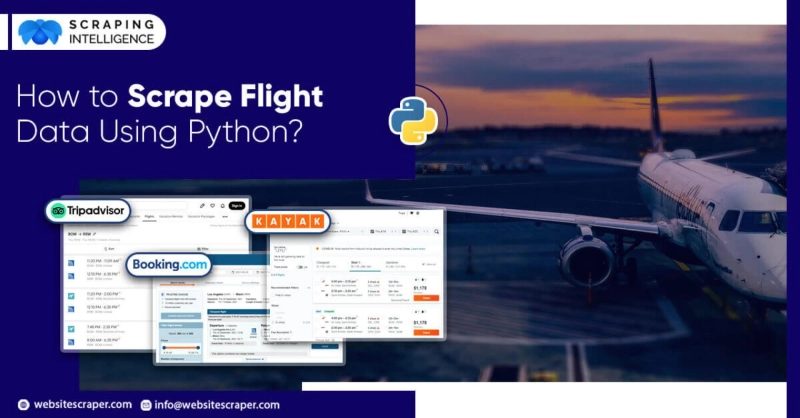Staying ahead of the curve in today's dynamic and highly competitive travel industry necessitates access to timely, accurate, and comprehensive data. The ability to scrape flight prices from airlines and providers is nothing short of a game changer for travel agencies, airlines, and travel enthusiasts. Scraping Intelligence invites you to investigate the limitless opportunities for gaining a competitive advantage and providing travelers with the best deals available in the ever-changing world of air travel.
In this investigation into scraping flight prices, we demonstrate the power of data-driven decision-making. Our journey will take you from the beginnings of web scraping to real-time pricing insights, allowing you to set competitive fares, optimize revenue, and provide travelers with a seamless booking experience.
Importance of Flight Price Data for Businesses and Competitors
Flight price data is critical for businesses and competitors in the travel industry because it has a direct impact on their operations, strategies, and competitiveness. Here's why flight price information is so important:
Competitive Pricing for Businesses: Flight price data enables businesses to set competitive prices for their services. They can attract price-sensitive customers without sacrificing profitability by monitoring competitors' pricing.
Revenue optimization is achieved by analyzing historical flight price data, which enables airlines and travel agencies to identify demand patterns and optimize pricing strategies. During peak travel seasons, this can result in increased revenue.
Dynamic Pricing: Businesses can use real-time flight price data to implement dynamic pricing strategies, adjusting fares based on factors such as demand, booking lead time, and seat availability.
Inventory Management: By analyzing historical price data, airlines can efficiently manage seat inventory. To maximize revenue on each flight, they can release additional seats or adjust prices.
Customer Attraction: Using data-driven decisions to offer competitive prices can help businesses attract and retain price-conscious customers, increasing market share.
Marketing Campaigns: Flight price information is used to inform marketing campaigns. To entice potential travelers, businesses can create targeted promotions such as fare sales or last-minute deals.
Cost-cutting measures: Monitoring price data enables businesses to make informed decisions about fuel hedging, route optimization, and cost management, potentially lowering operational expenses.
Why Scrape Flight Price Data?
1. Price Comparison
Web scraping allows you to collect information from multiple airline and travel websites at the same time. This makes it simple to check and compare prices for the same flight on various websites, allowing you to easily find the cheapest option.
2. Real-Time Updates
Flight prices fluctuate a lot, and web scraping allows you to get the most recent updates. You can use automated programs to monitor these changes and receive alerts when prices fall. This can help you book flights at a lower cost and stay ahead of the competition.
3. Analyze Historical Data
Web scraping can be used to collect historical flight price data, which can then be used to determine when it is usually the cheapest to book flights. This allows you to better plan your trips and save money by booking when prices are lower.
How to Web Scrape Flight Data
Now that you understand the advantages of web scraping flight data, let's look at how to do it correctly.
1. Select the Appropriate Tools
You'll need the following tools to get started:
Python is a popular web scraping programming language.
Beautiful Soup is a Python parsing library for HTML and XML documents.
Selenium is a web testing tool for automating browser interactions.
2. Locate the Target Website
In this example, we'll pretend to use a fictitious flight booking website called "FlyNow" to gather flight information. You can replace "FlyNow" with the actual website from which you want data.
3. Create a Web Scraping Script
Here's a quick Python script for scraping flight information from "FlyNow." Make sure to tailor it to your specific requirements:
import requests
from bs4 import BeautifulSoup
# Replace 'URL' with the actual URL of the flight search results page.
url = 'https://www.flynow.com/flights'
# Send a GET request to the website.
response = requests.get(url)
# Parse the HTML content of the page.
soup = BeautifulSoup(response.text, 'html.parser')
# Extract flight data here.
# Use CSS selectors to locate relevant elements.
4. Information Processing and Analysis
After you've gathered the data, you can use it and study it to find the best flight deals. You can also use Python's extra tools to set up notifications for when prices fall or change.
Conclusion
Web scraping flight data entails using a computer program to collect information about flight prices from websites. This can assist travelers in finding the best deals and making informed decisions when booking flights. Just remember to be respectful and follow the rules of the websites from which you're getting your information.



